The latest virtual gallery is available at:
(上)http://audio.taoart.com/fullview/zgdyh/6/?m=pNEoRH3oFdG
(下)http://audio.taoart.com/fullview/zgdyh/7/?m=YW1HKCyCRvW
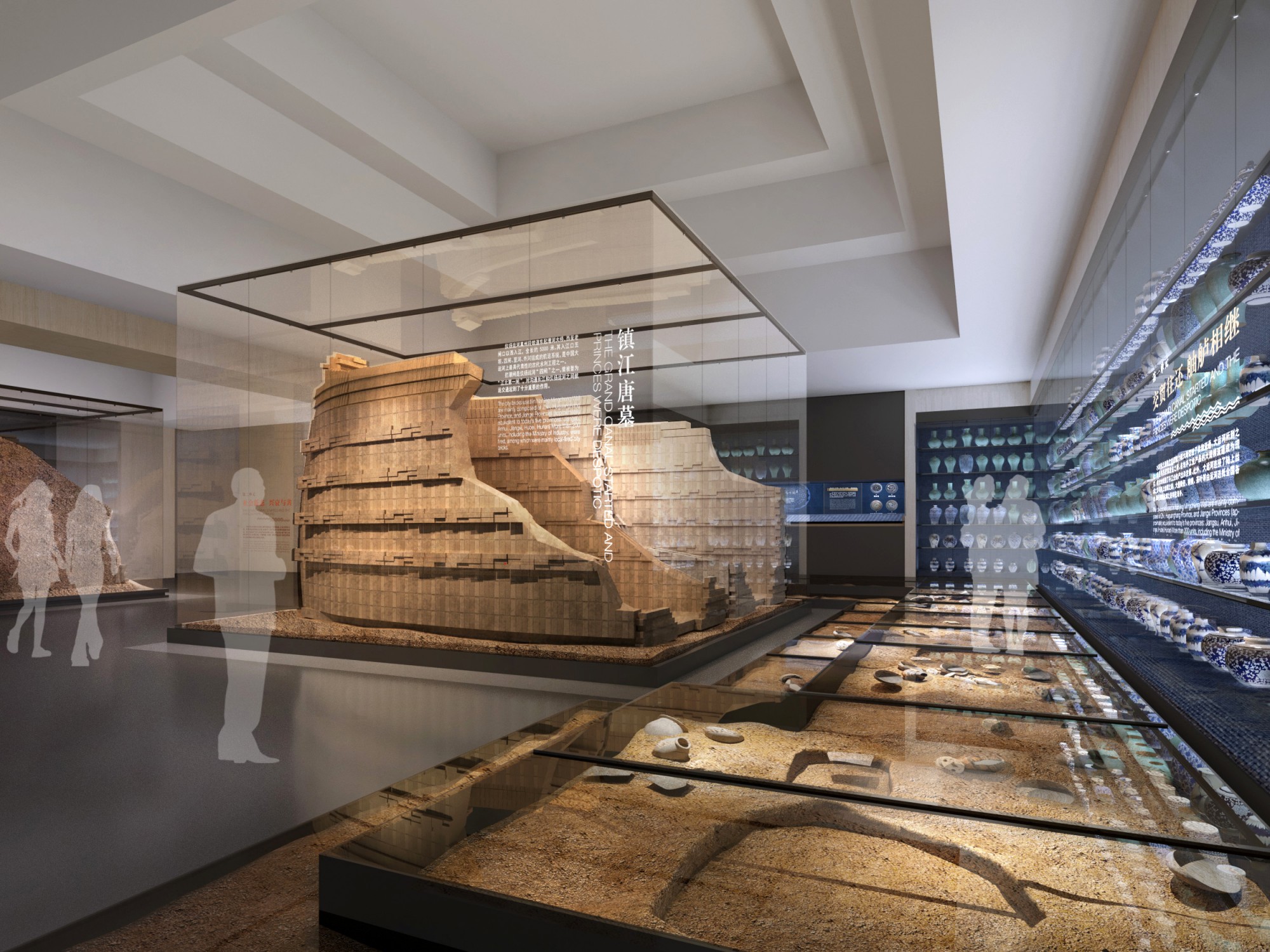
Introductory gallery: World Heritage, Lasting Greatness
The introductory gallery focuses on the Grand Canal’s journey to World Heritage status, presenting a chronological narrative. It highlights key moments, locations, figures, and events in the canal’s nomination process, showcasing how the Grand Canal of China, with its rich history, earned a place on the World Cultural Heritage List. This achievement symbolizes Chinese civilization, brought about through the call from modern experts and scholars, support from the State Council, practices from cultural relics, museum, and archaeological experts, nationwide interest and hopes, collaborative work of the City Alliance for Grand Canal Conservation and World Heritage Nomination, and the impactful decision made at the Doha Conference.

Part I Foundation for the Past Dynasties: Historical Changes of the Grand Canal
The oldest parts of the Grand Canal date back to the 5th century BC, but the various sections were first connected during the 7th century and second during the 13th century. It has been the only canal dug and operated by the government in order to secure grain transport, stabilize the government and maintain the unification of the country. Having gone through more than two millennia of continuous development and evolution, it has been a link-up for the political and economic center of the country and plays an irreplaceable role in facilitating economic prosperity, cultural exchanges, and advancement of science and technology.
As the old saying goes, “when the Grand Canal was navigable, the empires were prosperous; when the empires declined, the Grand Canal was abandoned.” The Grand Canal has withstood millennia of change, its destiny entwined with the ebb and flow of dynasties.

Electronic sand table about the canal throughout the history
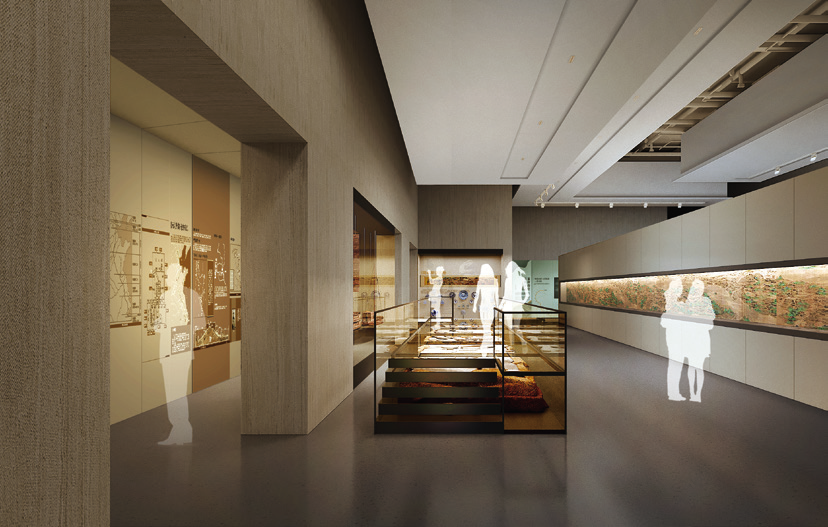
High city tower and crisscrossed roads in Tieweng (now Zhenjiang), the top city of Eastern Wu in the Three Kingdoms Period
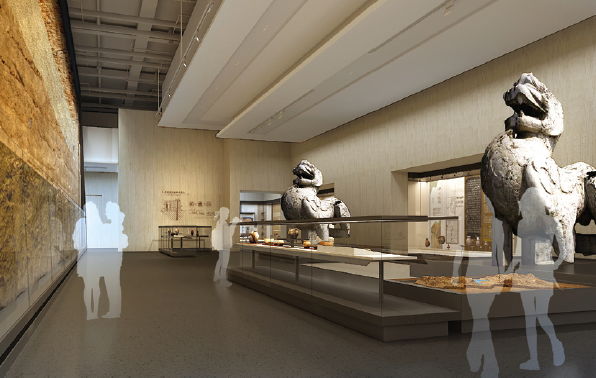
Stone carvings of Southern Dynasties imperial tombs by the Xiaoliang River in Lingkou Town, Danyang, Jiangsu Province

Sedimentary profile of the Bianhe River from the Tang and Song Dynasties to the Ming and Qing Dynasties in the ruins of the Zhouqiao Bridge
Part II Ingenuity of the Chinese People: Scientific and Technological Accomplishments in Constructing the Grand Canal
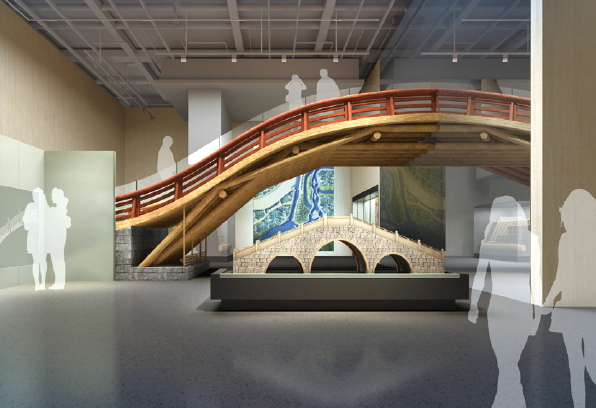
The Grand Canal has been acclaimed as a masterwork of super-large scale hydraulic engineering in human history. Its temporal and spatial coverage rarely seen in the world demonstrates human’s wisdom, resolution, and courage. Its distinctive and sophisticated project planning that varied in different water resources, topographic, and geologic conditions comprehensively solve the problems in water catchment, diversion, conservation as well as navigation and flood prevention. The Grand Canal has changed itself into a traffic network that connects northern and southern China as a whole. In terms of the engineering system, water-source projects, water-course projects, engineering management facilities, and canal ancillary structures, etc. together constitute the basic framework of the Grand Canal heritage and represent the achievements of traditional Chinese hydraulic science and technology.
Beginning with the fundamental characteristics of the Grand Canal as a UNESCO World Cultural Heritage site, this part of the exhibition delves into the extensive scientific and technological engineering feats and philosophical advancements associated with the canal. It explores water-source projects, water-course projects, engineering management facilities, and canal ancillary structures within the context of the Grand Canal’s heritage framework. The description is centered around the Huai’an Qingkou Hub Project, a prime exemplar of integrated water conservation endeavors. This project not only showcases the remarkable achievements of the Grand Canal’s water management initiatives but also emphasizes the unique position and traits of the Jiangsu section of the Grand Canal.

River deposits at the Yizheng storm surge barrier, the top barrier on the northern bank of the Yangtze River
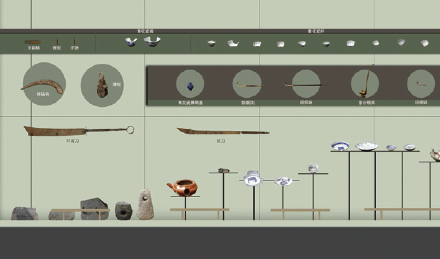
Everyday essentials unearthed at the Yizheng storm surge barrier site
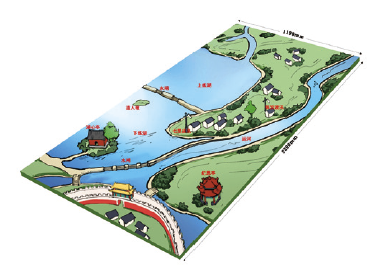
Illustration from the Lianhu Lake reservoir in Danyang: when the lake water is lowered by an inch, the canal rises by a foot
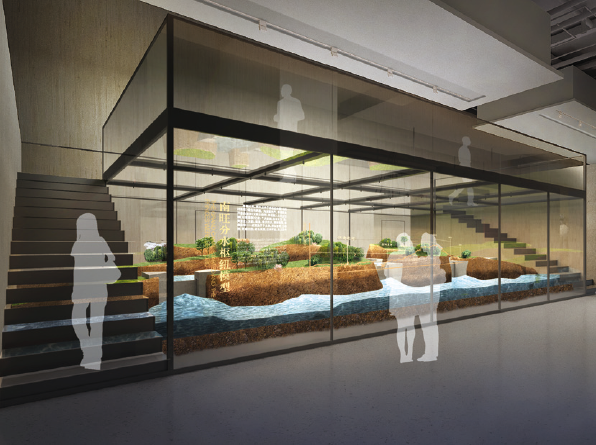
Model of the Nanwang Water-diversion Hydro-junction of the Heitong River, on the ridge of the Grand Canal
Part III A Waterway Network Connecting the Whole Empire: Social Functions of the Grand Canal
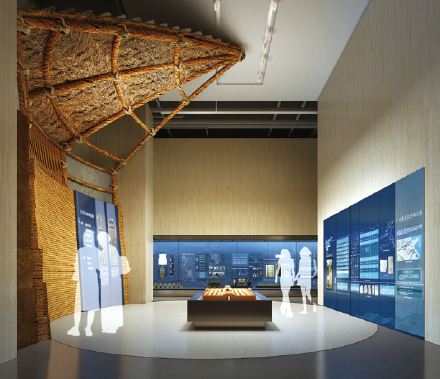
The national management of the Grand Canal started in the 8th century BC, prevailed in the late 6th to early 10th century, and reached its acme from the mid-14th until 19th century. The coverage of national management is varied and complicated, consisting of official titles and organs, grain transport and storage, bill passes and couriers, post offices and boatels, navigation locks and dams, ship administration, etc. The rise and fall of the nation coincided with the fate of the Grand Canal: when the Grand Canal was navigable, the empires were prosperous; when the empires declined, the Grand Canal was abandoned. The Grand Canal linked up the rivers from the northern to southern China and connected the land and sea transportation. It also pushed forward the exchange and mutual learning between the Chinese civilization and the world’s civilizations. It has fostered the Chinese ethos of unity in diversity and openness for inclusiveness.
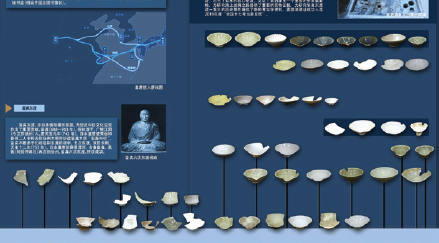
Cultural relics unearthed from the Huangsipu ruins in Zhangjiagang, a primary artery into the Yangtze River

Model of the Office of the Director-General of Grain Transport in Huaian District and display case of The Qianlong Emperor’s Southern Inspection Tour
Part IV Bounty and Livelihood: Economy and Culture along the Grand Canal
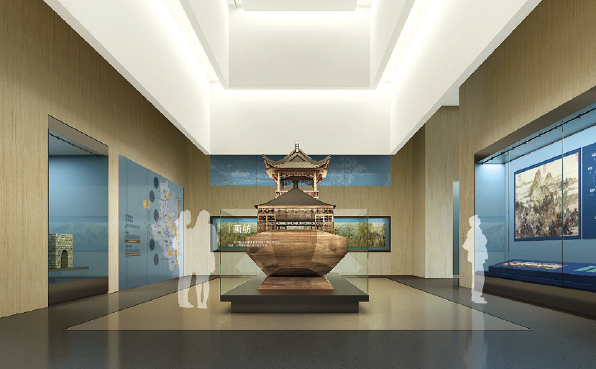
The Grand Canal not only guaranteed the transportation of grain, salt, iron, etc., but also served as a key channel for the hinterland economy and cultural exchange. Its influence was indelible for the rise and fall of the cities and towns along it, the changes of social formations and local customs, and the economic and cultural exchange between China and foreign countries. Moreover, the Grand Canal affected the locations and planning of metropolises and rise or decline of the industrial and commercial towns along it. It fostered the life modes characteristic of different generations of people alongside the canal, and produced rich and lasting value in economy, society, and culture.
This part of the exhibition delves into the economic and cultural exchanges facilitated by the Grand Canal, highlighting the profound impact it has had on the growth of cities and towns and the daily lives of those residing along its banks. It illustrates how the canal has played a pivotal role in shaping China’s ancient urban civilization and leaving a lasting spiritual influence on the customs and traditions of the canal-side communities across different dynasties and regions.
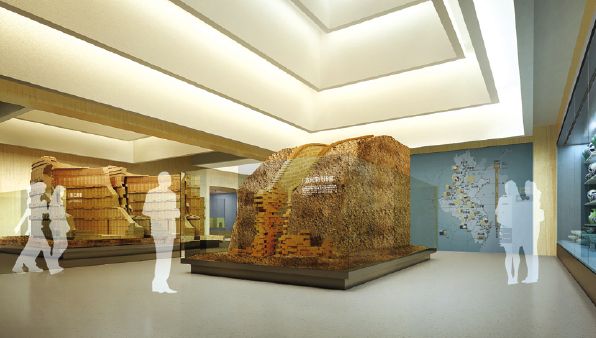
Tombs from the Tang Dynasty in Zhenjiang and brick kilns from the Song Dynasty in Yixing

Display case of a guardian beast of water
Part V A Legacy Lasting Millennia: Protection and Inheritance of the Grand Canal

The Grand Canal is culture in the fluid form, serving as both a vital water route for transportation and an economic lifeline. It weaves through vibrant urban and cultural landscapes, symbolizing the inheritance of Chinese civilization and the strengthening of the national spirit. The successful inscription of the Grand Canal as a World Heritage site marks a new beginning in the preservation of cultural heritage. We ought to actively explore and leverage the abundant cultural relics and resources, allowing the echoes of our artifacts, history, and culture to resonate. By fostering the creative evolution and innovative advancement of China’s venerable heritage, we can build a communal cultural sphere that is inclusive and beneficial to all.

Live streaming the Grand Canal with 5G signal, VR plus full 720° panoramic view
An ultra-HD VR camera positioned across from Yangzhou’s Wuting Bridge at Slender West Lake streams the stunning scenery live to the gallery through 5G signals. With your fingers, the beautiful 720° panoramic view of the Canal will be in front of you.

100 Billion Pixels of the Grand CanalYou may zoom in, and zoom in again to overlook the Shantang Street in the water town Suzhou with 100 billion pixels. With 29 VR cameras hidden at the corners of the street on the banks, you will stroll along the bustling street.









